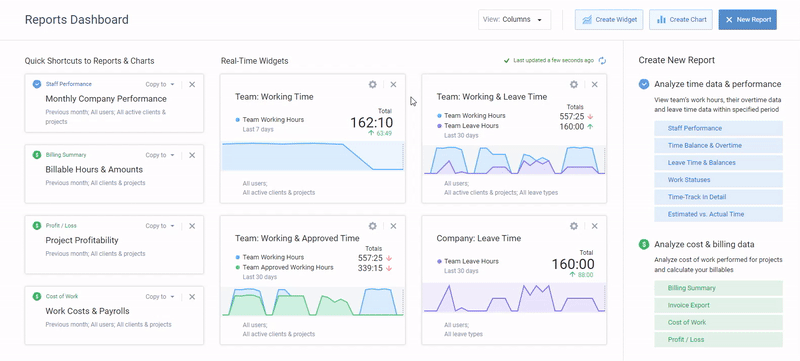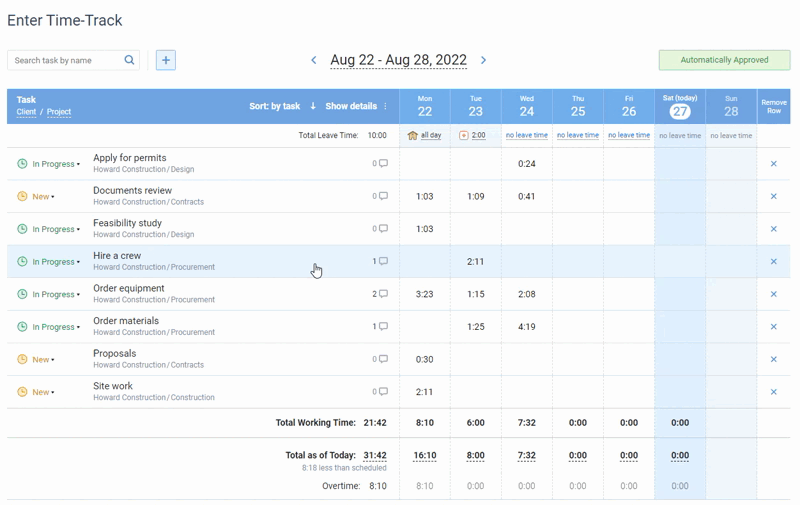
The more complex decisions involved in a group project, the more challenges team members will face. Some team members may prefer to ignore these issues, hoping that they go away. However, all issues should be addressed immediately to avoid the risk of them developing into catastrophic team problems. The following are potential issues that might emerge regarding team management.
10 Most Common Team Problems and Solutions
1. Poor Communication
Team members who have not yet mastered the art of communication might struggle to work collaboratively in a group. A team member that keeps information to themselves might be missing out on an opportunity to assist another team member. A person who does not share information or care about helping others does not understand what it means to work in a team. Team members with strong communication skills do not hesitate to share any piece of information they find relevant to the project. Some team members even go out of their way to share information that they believe might benefit another team member working on something completely out of their scope.
Solutions: Introduce new communication channels and encourage your employees to participate. Here are a few ideas:
- Schedule weekly work team meetings to get each team member share their goals for the week, highlight blockers and look for solutions together.
- Create a safe space for workplace communication. Introduce an environment where people could feel comfortable expressing their ideas, voicing criticism, and asking “stupid” questions.
- Introduce work collaboration tools such as time tracking software and encourage your employees to participate in the ongoing assignments and projects.
2. Zero Trust
Teams are built on trust. If there is no trust in a group, they are at risk of becoming dysfunctional. There has to be a certain level of mutual understanding in order for a team to grow and succeed. For example, if one team member does not trust that the leader has the team’s best interest at heart, they may resist taking action or purposefully hinder the team’s productivity. Trust is the foundation for any team willing to succeed.
Solutions:
- Explain your thought process. To minimize misunderstanding, communicate your intentions and reasons for doing something. This way, you give them a ground to trust what you do and why you’re doing it.
- Extend trust to others. For example, instead of micromanaging your team, set clear expectations and sit back. Otherwise, this lack of trust will hurt their morale and productivity.
- Take responsibility for failures and teach your team to do the same. Never blame or shame employees for their mistakes and promote a supportive environment.
3. Underlying Tension
Workplace tensions account for up to 80% of all team problems. It often leads to absenteeism, lowered productivity, economic losses for the company and other negative consequences. So, before tensions grow into conflicts and become a deeper issue, they need to be resolved as quickly as possible.
Solutions:
- Talk to tense workers privately when you notice signs of conflicts to understand the reason for their conflict and their different backgrounds and viewpoints. Consider the opposing perspectives to each of them in a private talk and come up with a positive resolution.
- Introduce an open-door policy that encourages employees to discuss similar situations with you and in doing so, showing them as employees who are proactively interested in workplace wellbeing.
4. Minimum Interaction or Engagement
Team members might become apathetic if they have lost interest in the project. If a team leader notices this occurring, they might need to explore why. Has the project gone off track? Is the team member not being appreciated? Is there a conflict that needs to be addressed to regain a team member’s interest? Whatever it is, get to the root of the problem.
Solutions:
- Provide feedback. Hold regular one-on-one meetings with team members to discuss their progress and achievements and establish conditions for pay raise and promotion to fuel their motivation and engagement.
- Gather feedback from them. Use one-on-one meetings to ask your team members how they manage, if they’d like to take on new responsibilities or switch projects. Pay attention to employees who slack off and take more absences – investigate each case: maybe they are burnt out or completely lost interest in the job.
- Recognize top performers. Appreciate engaged employees, take time to acknowledge their efforts and award them with incentives.
5. No Long-Term Planning
A project might suffer if there is no precise long-term planning. Ideally, a long-term plan will be presented as early as the project kickoff meeting. While this might not always be possible, long-term plans should be put into place at one of the earlier stages for the group’s advantage. Without a long-term plan in place, it might look like there is no end to the project in sight, resulting in the team members losing interest. No long-term planning means the project appears to exist without purpose, which is not ideal for the business’ growth.
Solutions:
- Build a project schedule and share it with your team. Project schedules contain detailed project structure, start and due dates, tasks and people responsible for them, which helps your team get the big picture and a better understanding of their role in the project.
- Introduce a project management tool that allows time and task management, visualizing project progress and building reports to see how your projects and team members are doing.

Reports dashboard in actiTIME – set up real-time data widgets
and add report shortcuts for quick access
6. No Milestones or Team Recognition
While this may not be considered an obvious problem, it can develop into one if team members feel underappreciated. For any project, it is important to have milestones laid out so that teams can feel proud of their accomplishments and use them to reflect on the progress they have made as a group. One of the things that improves group productivity and team culture is team recognition, which is why it can be a strategy to help avoid team members getting upset on the project.
Solutions:
- Introduce a task management approach where your employees can see their progress and change the status of the finished tasks. Otherwise, work will feel tiring and never-ending to them leading to decreased engagement and performance.

Online timesheet interface in actiTIME where every user can select task parameters
they want to see in their timesheets
- Set and celebrate project milestones. Milestones keep your team focused and motivated. When a new project milestone is achieved, take time to celebrate it with your team.
7. Bad Curveball Management
Changes are expected on every project. Accommodations will likely have to be made regularly. If the team has no idea how to handle these changes, it might make their progress suffer. It is considered a skill to learn how to roll with the punches, which is something you might want to introduce in your team’s training. As unexpected changes often induce stress, team members should know how to deal with this too.
Solutions:
- Articulate changes and set new goals. When the direction of the project changes, your team may feel disoriented and their previous efforts unappreciated and gone in vain. So, celebrate the old and explain the prospects of the newly introduced changes.
- Be engaging and supporting. While your employees are adopting new perspectives, they will probably have a lot of questions and struggles. Be patient, help them obtain stability and focus.
8. Conflicting Goals
Members might have conflicting goals regarding how they expect the project to benefit them as an individual. A team member might be focused on honing their skills more in one area than another. For example, suppose one team member prefers to take an accounting approach on an asset management problem while the other takes a financial approach. In that case, this might cause issues if the teammates cannot agree on what method is best for the specific project.
Solutions:
- Compare the conflicting approaches and pick one that is best in the given circumstances. Talk to the side whose initiative has been turned down, explain your reasons for choosing the other option and highlight the experience they will get applying new thinking in their work.
9. Low Transparency
Lack of trust is one the most common team problems that requires transparency to be resolved. There cannot be any secrets within a group, or it might damage a business’s reputation. Team leaders are responsible for establishing a high level of transparency to earn the respect of their team members. If transparency clearly exists at higher levels, it will influence the rest of the group to follow suit.
Solutions:
- Share high-level plans. Share your product and project development plans with your team and encourage discussions. Your team members may offer refreshing perspectives and ideas that you may be missing, so be supportive and spare no praise.
- Establish open communication channels where you share messages and announcements with employees across departments.
10. Adopting Incorrect Team Management Model
Particular clear-cut team management models may work for some teams, such as the waterfall or agile model. However, the best team management strategy to avoid issues down the road is to opt for a hybrid approach combining both models. Team members will not be limited by the restrictions from a single model. An alternative, a more flexible approach can be implemented from the start to help members more easily adapt to changing project requirements.
Solutions:
- Brush up project management approaches. Project management offers several methodologies to choose from and even more techniques to apply and combine. Review these to build the most effective approaches in any given circumstances.
- Implement team management tools. For example, with time tracking software, they can more easily identify areas that take a lot of their focus but generate little results.
Eliminate Team Problems with the Right Software
Most of the mentioned team problems boil down to the following idea: team success is impossible without transparent work tracking, workload management, collaboration and focused effort. The good news is that these objectives can be easily met with the right piece of software.
For example, actiTIME relies on time tracking and task management features to provide these essential benefits. You can create an unlimited number of projects, assign granular permissions to your team members, use task and project management tools to plan and manage ongoing projects.

Use task statuses, Kanban boards, comments, task estimates, deadlines and dozens of other tools to give your team memebrs access to project health statistics and allow them to collaborate, while time tracking ensures complete transparency and builds trust. Try actiTIME for free using a free 30-day trial (no credit card required) to explore its functionality and see if it’s a good fit for your business.












































